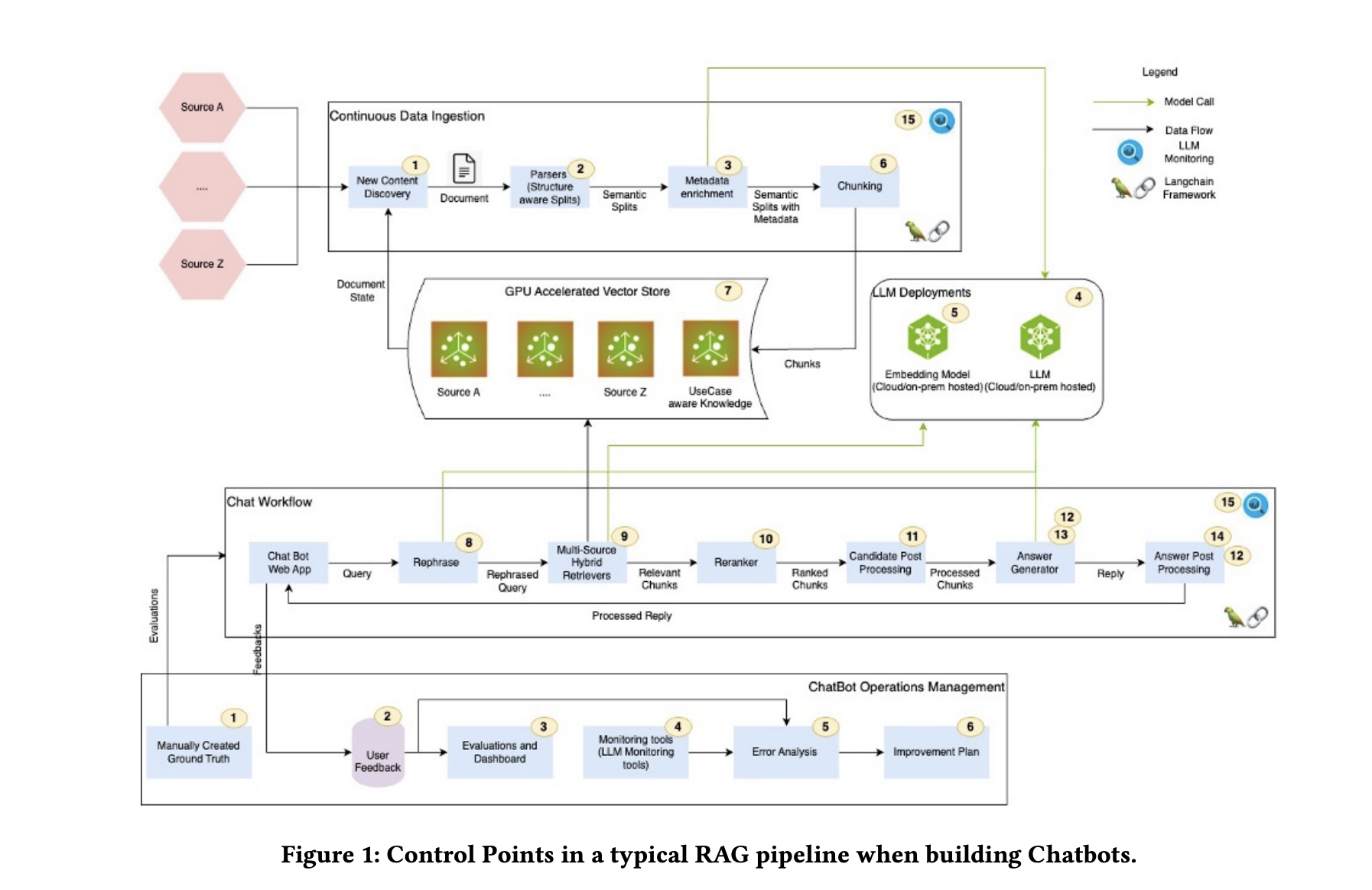NVIDIA AI Introduces FACTS: A Comprehensive Framework for Enterprise RAG-Based Chatbots

In today’s rapidly evolving landscape, enterprise chatbots are becoming essential tools to enhance employee productivity by providing quick access to organizational knowledge. However, the journey to build effective, scalable, and secure Retrieval-Augmented Generation (RAG) systems is fraught with challenges. NVIDIA’s recent research offers a comprehensive solution with the FACTS framework, addressing issues such as content freshness, architecture, cost efficiency, testing, and security.
Challenges in Developing Enterprise Chatbots
Developing conversational AI systems for enterprises presents unique challenges. Existing chatbots often struggle to provide accurate and contextually relevant responses, particularly when dealing with dynamic and proprietary enterprise information. Retrieval-Augmented Generation (RAG) systems combine the generative power of Large Language Models (LLMs), such as GPT-4, with retrieval mechanisms that ensure responses are both informative and up-to-date. However, implementing these systems requires careful engineering and optimization across multiple dimensions.
The FACTS Framework
To tackle the complexities of building successful enterprise-grade chatbots, NVIDIA introduces the FACTS framework, focusing on Freshness, Architecture, Cost, Testing, and Security. This comprehensive approach aims to guide developers through designing, implementing, and optimizing RAG pipelines for enterprise environments.
- Freshness: Ensuring that chatbot responses reflect the most current enterprise data is critical. By integrating vector databases that support real-time content retrieval, chatbots can maintain up-to-date information for users, addressing a common weakness in static models.
- Architecture: Building flexible and modular chatbot platforms is essential to accommodate diverse enterprise needs. The framework supports the integration of multiple LLMs, vector databases, and other components, allowing for customization and scalability.
- Cost: Deploying generative AI solutions can be costly, particularly when using large models. The FACTS framework emphasizes balancing the use of both large and small LLMs to optimize economic feasibility without compromising on performance.
- Testing: Rigorous testing, including both automated evaluations and human-in-the-loop validation, is vital to ensure the accuracy, reliability, and safety of chatbot responses.
- Security: Protecting sensitive enterprise data is a top priority. The framework addresses compliance with access control policies and implements guardrails to prevent unauthorized data exposure.
Case Studies: Chatbots at NVIDIA
NVIDIA’s research includes case studies of three enterprise chatbots developed using the FACTS framework: NVInfo Bot, NVHelp Bot, and Scout Bot. Each chatbot serves a distinct domain, such as enterprise content, IT help, HR benefits, or financial earnings, demonstrating the versatility of the framework.
- NVInfo Bot manages approximately 500 million documents, ensuring that enterprise content is accessible while enforcing document access controls.
- NVHelp Bot focuses on IT help and HR benefits, using multi-modal data sources to answer employee queries effectively.
- Scout Bot provides insights into company financials by managing structured and unstructured data from public sources.
The results show that adhering to the FACTS principles significantly improves the reliability and user experience of RAG-based chatbots. For example, integrating a hybrid search mechanism—combining vector and lexical search—enhanced retrieval relevance, while employing multi-agent architectures enabled the handling of more complex queries.
Conclusion
NVIDIA’s FACTS framework provides a holistic approach to building effective, secure, and enterprise-grade chatbots. By focusing on freshness, architecture, cost, testing, and security, this research presents practical solutions to the inherent challenges of deploying conversational AI in enterprise settings. The framework ultimately enhances chatbot performance, reliability, and user satisfaction, making it a valuable resource for organizations looking to leverage RAG-based systems for their internal operations.
Check out the Paper. All credit for this research goes to the researchers of this project. Also, don’t forget to follow us on Twitter and join our Telegram Channel and LinkedIn Group. If you like our work, you will love our newsletter.. Don’t Forget to join our 50k+ ML SubReddit
Interested in promoting your company, product, service, or event to over 1 Million AI developers and researchers? Let’s collaborate!
Asif Razzaq is the CEO of Marktechpost Media Inc.. As a visionary entrepreneur and engineer, Asif is committed to harnessing the potential of Artificial Intelligence for social good. His most recent endeavor is the launch of an Artificial Intelligence Media Platform, Marktechpost, which stands out for its in-depth coverage of machine learning and deep learning news that is both technically sound and easily understandable by a wide audience. The platform boasts of over 2 million monthly views, illustrating its popularity among audiences.




Comments are closed, but trackbacks and pingbacks are open.